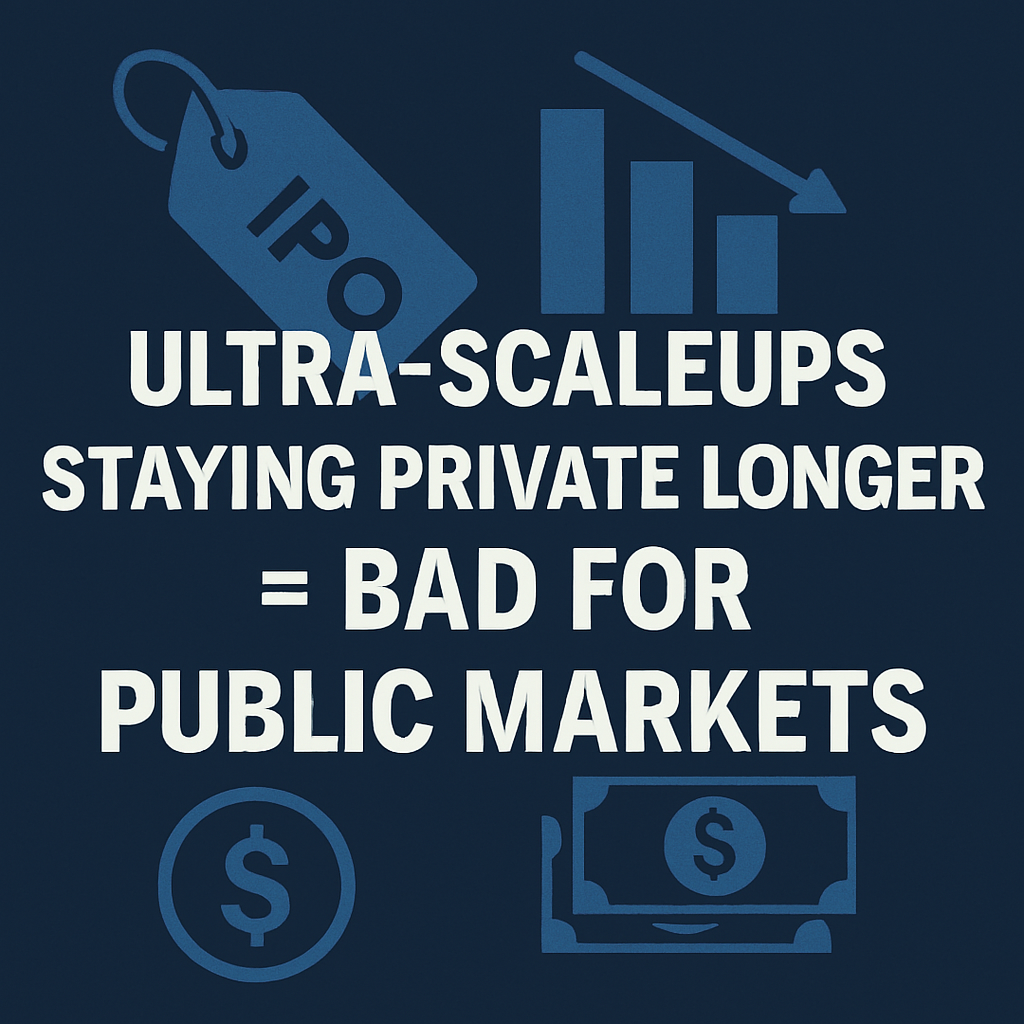Notes: Stripe Staying Private Longer = Bad for Public Investors

Summary
- A funding squeeze post-2022 has pushed mid-size scaleups to IPO earlier, redistributing more return to public investors. If this continues, we may see the likes of Snyk push for an IPO sooner than many are anticipating.
- However, most top-tier scaleups like Stripe and SpaceX remain private, using structured secondary markets to avoid IPO-related scrutiny and maintain control.
- While public investors may gain better entry points than in the past, the shift toward operational discipline means explosive, multi-bagger returns are less likely.
Staying private longer & fewer opportunities for the public market
As a crossover analyst covering both public and private markets, I’ve been reflecting on a striking trend: successful startups — or "scaleups," as we now call them — are staying private longer. This shift is reshaping the investment landscape, with profound implications for both public and private investors.
Public Investors: A Shrinking Pool of Opportunities
For public investors, the investable universe is shrinking in both quality and quantity. The number of publicly traded companies has plummeted from over 8,000 in the late 1990s to just 3,700 by mid-2023. Within this smaller pool, the standout opportunities are the "Magnificent 7"— Apple, Microsoft, Google, Amazon, Meta, Tesla, and Nvidia. These giants went public early in their lifecycles, before the modern VC ecosystem matured into the powerhouse it is today. Now, that ecosystem enables top startups like Stripe, Databricks, and Canva to delay IPOs, keeping their growth potential out of reach for public investors. Even when these companies finally go public, much of their value has already been captured by private investors, leaving slimmer returns for public shareholders.
Private Investors: A Golden Era Turned Bubble
For private investors, particularly growth-stage VCs, the trend of staying private has been a tailwind of epic proportions from the early 2000s to 2022. Investing in mature startups and helping them extend their private phase — with ever-higher valuations — offered a low-risk, high-return strategy. But as Wall Street often does, it pushed a good thing too far. Between 2020 and 2022, due to the prior stellar returns of late-stage growth VC vintages, a flood of capital flowed into this asset class. With limited high-quality targets available, valuations skyrocketed to unsustainable levels, setting the stage for zero or even negative returns.
Stripe, alongside peers like Databricks and Canva, stands out as a resilient exception. While many growth tech companies suffered 90%+ drawdowns or collapsed entirely (think Bolt), these BoB (best of breed) players capped their peak drawdowns to around 50% and have since clawed their way back.
The Current Crossroads: Where Are the Next Big Winners?
We’re now at a pivotal moment. The MAG 7’s decade-long bull run is showing signs of fatigue, yet finding their successors in the public market is proving elusive. Could it be Palantir (PLTR), Palo Alto Networks (PANW), Fortinet (FTNT), or Monday.com (MNDY)? Perhaps. But the pool of high-quality public tech stocks is undeniably shrinking. Meanwhile, promising companies like Rippling and SpaceX remain private, locked away from public investors. Unfortunately for many public investors with a cybersecurity appetite, Wiz has recently agreed to be acquired by Google (assuming the FTC approves the deal), taking another future opportunity off the table.
This dynamic is squeezing public market returns and forcing investors to hunt harder for the next big thing. The trend of staying private longer — exemplified by Stripe and others — may continue to starve public markets of top-tier opportunities, leaving both analysts and investors pondering what’s next.
Recent Shifts & Implications
The VC and startup landscape has undergone significant changes in recent years, driven by evolving investor behavior, economic shifts, and debates over the best path to growth and scale. These trends have far-reaching implications for startups, investors, and the broader entrepreneurial ecosystem. In the following sections, we'll explore the growing interest of public investors in late-stage startups, the decline of growth-oriented VC firms, the ongoing debate of staying private versus going public, and the challenges scaleups have faced since 2022, including how these challenges have prompted a reassessment of IPO strategies.




